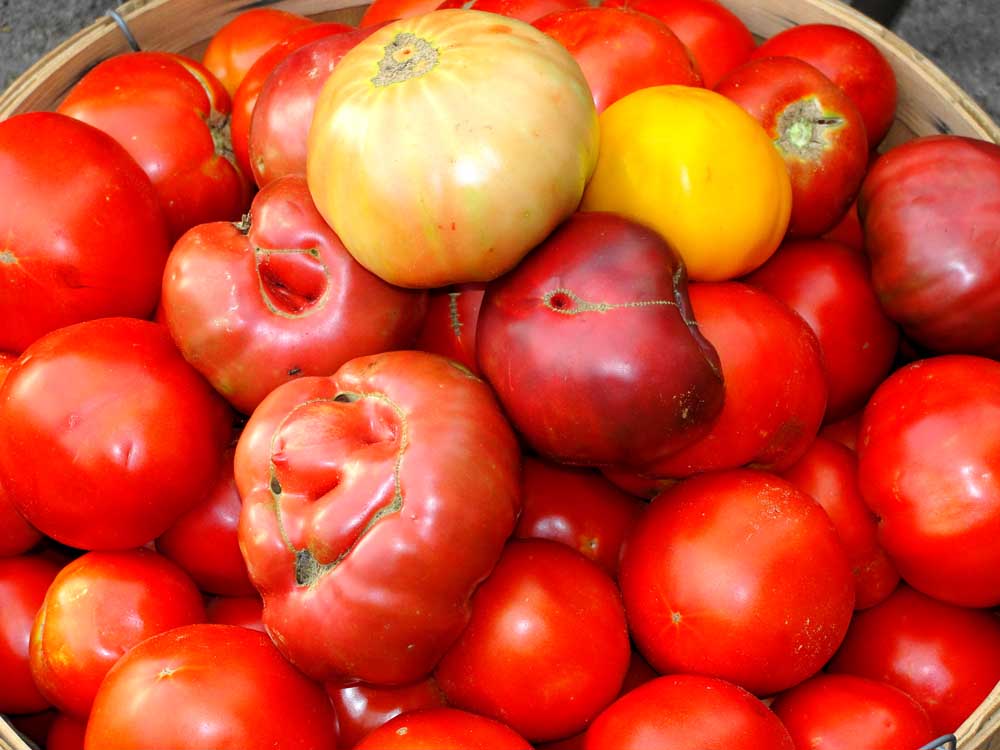It’s finally time to plant tomatoes
Published 2:20 pm Tuesday, March 16, 2021

- Homegrown tomatoes are an East Texas treat.
Barring a late freeze, snowstorm, ice storm or an earthquake, tomato planting time is finally here. Tomatoes are planted from transplants after all danger of frost in the spring. They cannot tolerate frost or freeze and thrive with mild and moderately warm temperatures in spring and early summer. Tomatoes do not set fruit in the heat of our summers (above 92 degrees) which leaves only a small window of opportunity in the spring to form fruit. This makes planting time critical. If you plant too soon (before March 15), frost will kill them.
However, if you plant too late (after April 15) you severely reduce your production. The ideal transplant is 6-8 inches tall, dark green, and has 6-8 healthy leaves. Avoid those that are yellow-green, purple-green, or tough and woody. These are stunted and will not produce a bountiful harvest. To avoid unexpected late frosts, many East Texas gardeners have buckets, hot caps, or row cover ready for protecting their plants. Often summer heat, drought and insects kill spring planted tomatoes in Texas and that’s normal.
Tomatoes require at least eight hours of direct sunlight each day for maximum yields. Tomatoes do best in rich, loamy soils. Due to a problem with root infecting, microscopic nematodes (typically of sandy soils), it is best to avoid areas where this has been a problem or where tomatoes have grown the previous year. It is ideal to till in several inches of compost or organic matter and incorporate 2 pounds of a complete lawn (15-5-10, 28-3-12, etc.) per 100 square foot of bed or every 35 feet of row before planting. In small plantings, incorporate 2 teaspoons per square foot or foot of row. Organic fertilizers of any kind are good for tomatoes but because they are lower in nutrients than typical fertilizers you have to use more for the same results. The ideal soil pH for growing tomatoes is 6.0-7.0.
Unfortunately, heirloom tomatoes and other indeterminate types don’t produce well in East Texas. Celebrity is a common semi-determinate variety that does well here for most beginners if given enough sun and fertilized well.
Tomato transplants should be planted in well cultivated soil. Dig holes twice as wide and at least as deep as the existing pots they are growing in. Tomatoes can form roots along their stem so tall plants should have the lower several inches of their stems buried beneath the soil. By planting them deeper you produce a stronger plant with more roots. Strip any foliage off the lower stem that is to be beneath the ground and place into the hole. Gently firm the soil around them. Water thoroughly with a water-soluble plant food such as Miracle Grow at half the labeled rate.
Caged tomatoes produce more high-quality fruit and have fewer disease problems. The best of all supports for tomatoes are sturdy homemade cages made from concrete reinforcing wire or cattle panels. They should be at least 60 inches high and 24 inches across. It is best to tie them to two stakes hammered into the ground to prevent tall plants from toppling over. Suckers do not need to be removed from the base of the plants. All foliage is necessary in Texas to keep the tomato fruit from sunburning.
The Texas A&M AgriLife Extension Service Easy Gardening fact sheet on growing tomatoes can be found online on the Aggie Horticulture website under vegetable resources.
Greg Grant is the Smith County horticulturist for the Texas A&M AgriLife Extension Service. He is author of Texas Fruit and Vegetable Gardening, Heirloom Gardening in the South, and The Rose Rustlers. You can read his “Greg’s Ramblings” blog at arborgate.com, read his “In Greg’s Garden” in each issue of Texas Gardener magazine (texasgardener.com), and follow him on Facebook at “Greg Grant Gardens.” More science-based lawn and gardening information from the Texas A&M AgriLife Extension Service can be found at aggieturf.tamu.edu and aggie-horticulture.tamu.edu.






